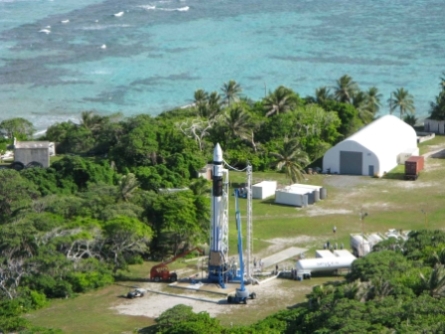Space Exploration Technologies' (SpaceX) third Falcon 1 rocket flight failed to reach orbit on 2 August when the first-stage accelerated into the second stage during staging.
SpaceX was launching two NASA satellites and a US Department of Defense spacecraft. The launch saw the maiden flight of the company's new first-stage Merlin 1C engine, which operated correctly. The rocket's separation system also worked and it reached an altitude of 217km (134 miles) before the collision.
|
|
|---|
Above: SpaceX's third Falcon 1 rocket at its launch site |
According to SpaceX, unburned fuel in the engine's cooling channels and manifold combined with residual oxygen to produce enough thrust to overcome the separation impulse. The solution is to increase the time between commanding main engine shutdown and stage separation.
On 4 August SpaceX announced a $20 million equity investment from the Founder's Fund venture capital company. Three of the fund's directors are Musk's fellow co-founders of the Paypal internet payment system.
None of SpaceX's Falcon 1 flights have achieved orbit, but the fourth mission is expected in the next two months. On 30 July and 1 August the company test fired its more powerful Falcon 9 rocket's first-stage with all of its nine Merlin 1C engines operating. Previous tests had fired clusters of three and five of the engines.
The stage collision can be seen just before the end of this rocket-cam video of the launch
Source: Flight International























